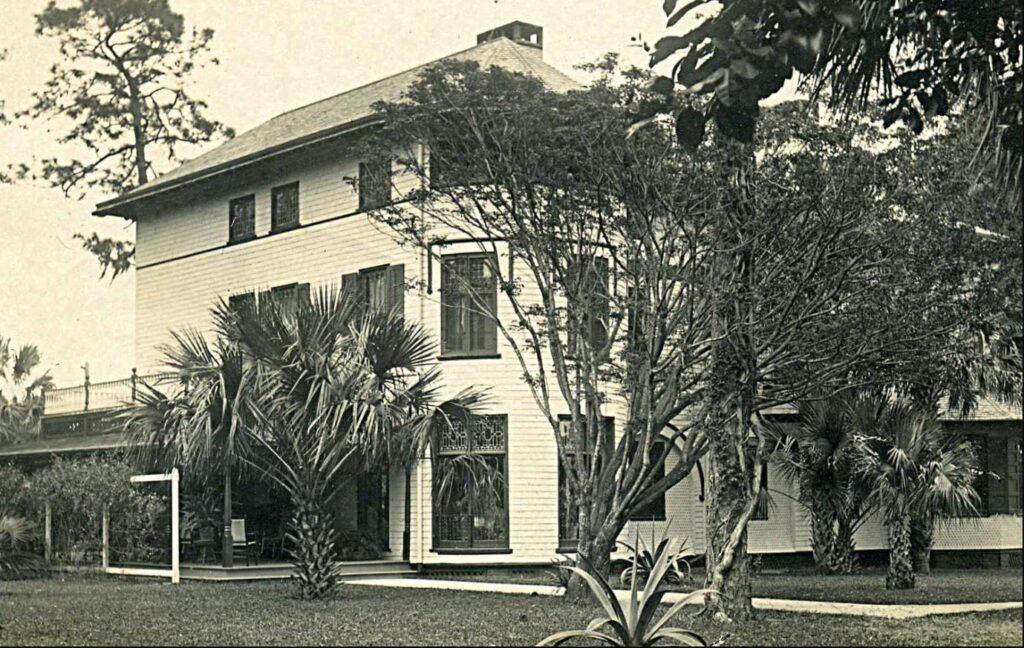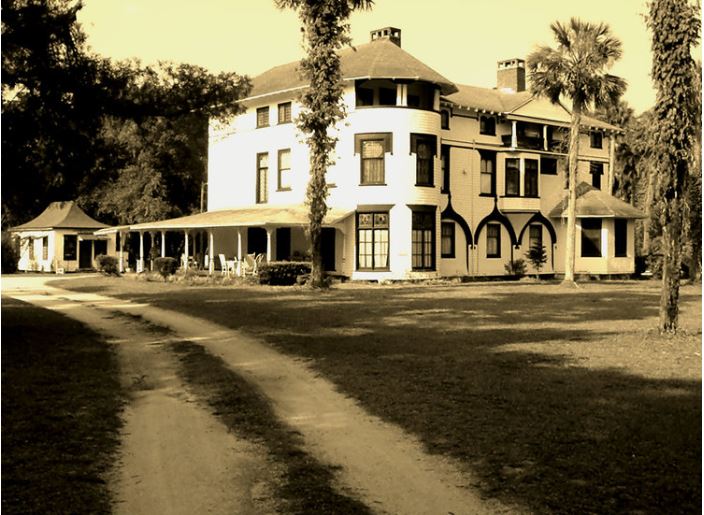By Kara Kovalev, Registrar, Orange County Regional History Center
John B. Stetson is best known for his design of the modern cowboy hat. What’s less well known is the impact he had on the town of DeLand, home of Stetson University. His Gilded Age mansion on Camphor Lane stands as a reminder of his influence.
The hat style that bears Stetson’s name dates from long before he came to Florida. Born in 1830, Stetson was diagnosed with tuberculosis as a young man and traveled west to Colorado, where he saw flaws in traditional hats and caps, including a lack of shade and an inability to hold up to the rain. In 1862, he designed his own wide-brimmed, waterproof hat and returned to Philadelphia in 1865 to begin production. He conducted a successful business and was known to pay fair wages and offer extensive benefits to his employees.
Early snowbirds
In 1885, Stetson’s friend Henry DeLand invited him to visit Persimmon Hollow in Florida – present-day DeLand. Stetson was impressed and purchased 300 acres of orange groves on which to build a home. Construction began in 1886 and took two years. The 18-room, three-story mansion was originally planned to be 17,000 square feet and a full-time residence; however, its size was limited to 10,000 square feet because Stetson’s wife, Elizabeth, did not want to live in Florida full-time, making the Stetsons some of Florida’s first snowbirds.
The home contains 16 different mosaic parquet-wood floor patterns, 10,000 panes of antique glass designed by Tiffany, handmade wood embellishments, six fireplaces featuring Italian marble, and a copper bathtub. It was the first home in Florida, and one of the first in the world, to be built with Edison electricity, steam heat, indoor plumbing, and a call-bell system. An 800-square-foot schoolhouse was built on the property for the use of the Stetson children. Also on the property were gardens, gazebos, fountains, patios, and a pool. Henry Flagler even built a private railway spur to the grounds in order to deliver building materials.
A center of community
The Stetson Mansion played an integral role in the growth of the community and the increase of tourism to the area. Stetson’s presence drew other influential people such as the Astor family, John D. Rockefeller, Frederick DeBary, and Thomas Edison. He hosted gatherings nearly every weekend for local residents at which the DeLand Municipal Band was featured, and his home became a meeting place where business was discussed and decisions were made.
In addition, Stetson used his own resources to improve DeLand by building an electric-power plant, hotels, and a golf course. He also encouraged the expansion of the railroad in the area. He was not only a successful business leader but also a philanthropist; when Henry DeLand was facing financial trouble, he turned to his friend Stetson to help finance the school that would later be renamed to Stetson University.
After Stetson died in 1906, the mansion was abandoned but remained in the family for two decades before transferring between several owners. Through every owner, it has always remained a private residence. The current owners, who bought the home in 2005, have renovated it to its former glory while also introducing modern comforts. Over a span of 18 months, subtle updates were made, along with the conversion of the schoolhouse into guest quarters and the addition of a three-car garage.
Time has not stood still at the mansion as it is not a museum. Instead, the home has been modernized as necessary while still honoring its original owners and maintaining its historic charm. It is still a private residence, although its doors do open for tours in the spring and at holiday season. The mansion is listed on the National Register of Historic Places. More information is available at StetsonMansion.com.
Photos courtesy of the Stetson Mansion.



